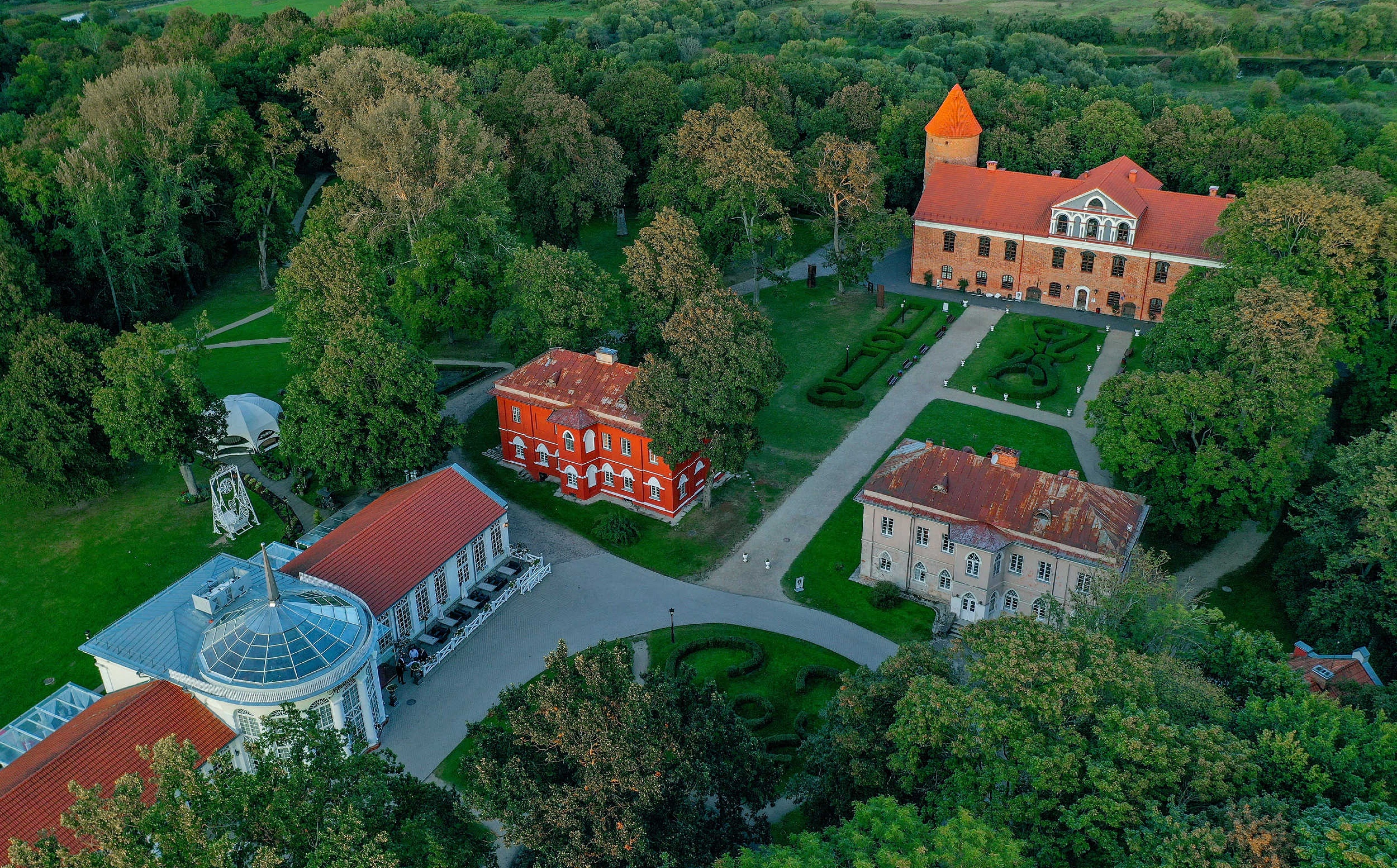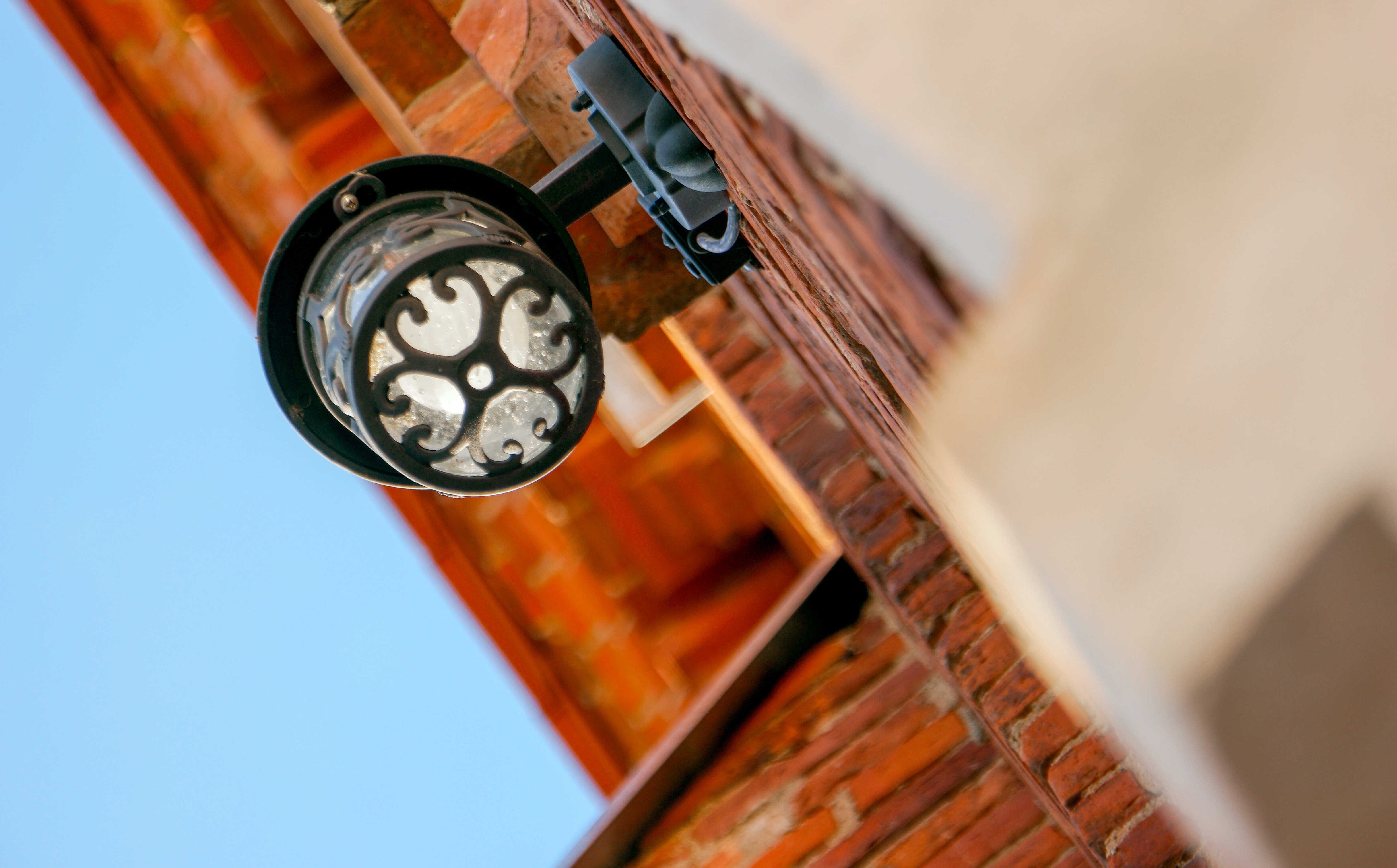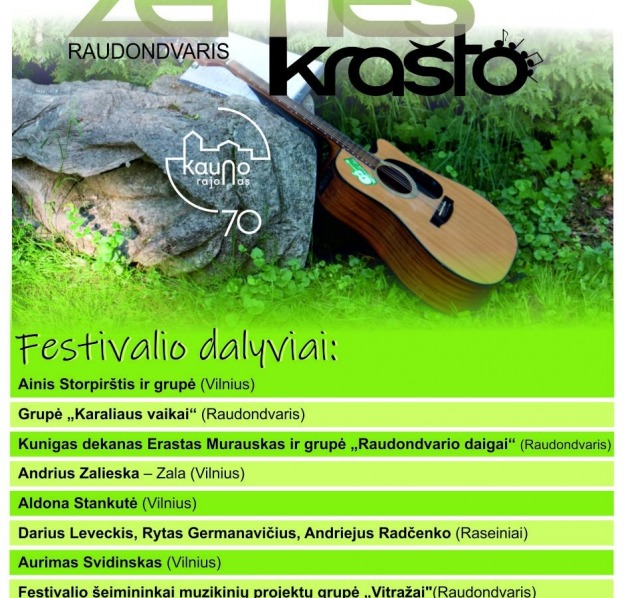Raudondvaris Manor is a monument of Lithuanian Renaissance architecture of the 17th century located on the upper terrace of the right bank of the Nevėžis river, near the confluence of the Nevėžis and the Nemunas. It is a significant attraction of cultural tourism, it also houses the residence of artists.
The historical beginning of the manor is the second half of the 16th century, when a chamberlain of Kaunas Vaitiekus Dzevaktauskas started to build a castle here. The later rulers of the manor were famous families of Lithuanian noblemen: Dzevaltovskiai (Dzewaltowski), Kosakovskiai (Kossakowski), Radvilos (Radziwiłł), Vorlovskiai (Worłowski), Zabielos (Zabiełło), Tiškevičiai (Tyszkiewicz).
The residence of the Count Tiškevičius
The last rulers of the manor - Counts Tiškevičiai (Tyszkiewicz) - left a sharp trace in the local history. In May 1831, wooden buildings of the manor burned down in the fire, therefore, the Count Benediktas Emanuelis Tiškevičius (Benedykt Emanuel Tyszkiewicz) started building a new brick ensemble with the help of architects Jonas Margevičius, Jakob Woller from Prussia, and Laurence Cesar Anikini from Italy. The collections of art, rare books, exotic plants and animals were accumulated at the residence of the Count Tiškevičius in Raudondvaris.
The manor today
Raudondvaris ensemble consists of a surviving palace with a tower, two oficinas, an orangery, an ice-cellar and a park covering the area of 3.8 hectares. Active cultural life and numerous events take place at the renovated manor house. The area is adorned with restored greenery and flower beds, the ice-cellar houses Tourism and Information Centre of Kaunas District, the orangery houses a restaurant, and the manor stud farm houses an arts incubator.



